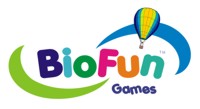2020 Psychotherapy Networker Symposium Conference – Join us for the 43rd annual celebration!
For 43 years, the Networker Symposium has been psychotherapy’s most celebrated annual gathering, with 150 workshops, over 100 of the field’s leading innovators, and a community of 4,000 inquiring practitioners like you. Join us from March 19 – 22, 2020 to explore the latest advances in the field and discover a range of possibilities to bring fresh ideas and renewed creativity into your practice.
REGISTER NOW
Join this year’s Featured Speakers
Bryan Stevenson, Tara Brach, Peter Levine, Esther Perel, Alfiee Breland-Noble & Lori Gottlieb!
Plus, Bessel van der Kolk, Dan Siegel, Sue Johnson, Dick Schwartz & many more . . .
REGISTER NOW
Make Your Hotel Reservations for the Symposium
The Networker Symposium has a special discounted rate for hotel rooms at the Omni Shoreham Hotel.
Click here for rates and availability.
Can You Afford To Miss All This?
We’ve designed the Symposium to foster full-engagement learning—from Thursday events that free the body and awaken the mind to Sunday events that help you integrate and apply the inspiration you’ve gained to your practice at home. Your Symposium experience includes:
REGISTER NOW
For 43 years, the Networker Symposium has been psychotherapy’s most celebrated annual gathering, with 150 workshops, over 100 of the field’s leading innovators, and a community of 4,000 inquiring practitioners like you. Join us from March 19 – 22, 2020 to explore the latest advances in the field and discover a range of possibilities to bring fresh ideas and renewed creativity into your practice.
- Registration is now open!
- Register today and take advantage of our early-bird discounts
- Select from our list of workshop options
- Earn up to a year's worth of CE hours
REGISTER NOW
Join this year’s Featured Speakers
Bryan Stevenson, Tara Brach, Peter Levine, Esther Perel, Alfiee Breland-Noble & Lori Gottlieb!
Plus, Bessel van der Kolk, Dan Siegel, Sue Johnson, Dick Schwartz & many more . . .
REGISTER NOW
Make Your Hotel Reservations for the Symposium
The Networker Symposium has a special discounted rate for hotel rooms at the Omni Shoreham Hotel.
Click here for rates and availability.
Can You Afford To Miss All This?
We’ve designed the Symposium to foster full-engagement learning—from Thursday events that free the body and awaken the mind to Sunday events that help you integrate and apply the inspiration you’ve gained to your practice at home. Your Symposium experience includes:
- Innovative strategies that open up new possibilities with even your toughest cases
- Creative approaches and practical insights from 100 of the field’s best teachers
- Hands-on opportunities to practice what you learn in 130 workshops
- Innovative models and down-to-earth guidance on building a thriving practice
- An unparalleled opportunity to recharge, reenergize, and refocus in an atmosphere of collegiality, support, and adventure
- Up to a year’s worth of CE Hours!
REGISTER NOW






